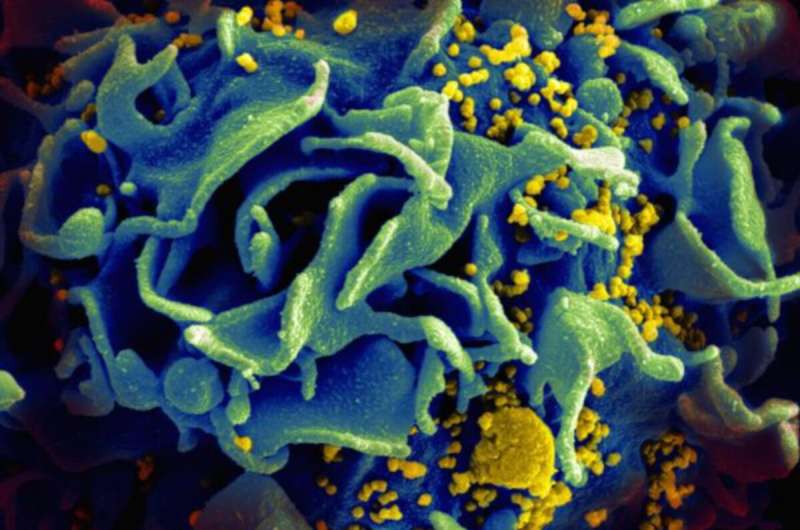December 6, 2019 report
A nine-enzyme chain-reaction approach for making the HIV drug islatravir

A collaboration between Merck & Co and Codexis, Inc. has resulted in the development of a nine-enzyme, chain-reaction approach for making the HIV drug islatravir. In their paper published in the journal Science, the group describes the inspiration for their work and how well the final product turned out. Elaine O'Reilly and James Ryan with University College Dublin have published a Perspective piece in the same journal issue outlining the work by the team and what it represents.
As O'Reilly and Ryan note, a wide variety of complex natural products are the result of biosynthesis of more basic building blocks. They further note that many organisms rely on the selectivity of enzymes to carry out such processes, which, they point out, typically involve a multistep chain reaction in which the results of the first reaction are used as the basis for the next.
In this new effort, the researchers set out to find a better way to make an HIV investigational drug called islatravir—for inspiration, they looked to the bacterial nucleoside salvage pathway (NSP) involved in recovering bases and nucleosides that result from RNA degrading to DNA. In that process, they noted, there are three primary enzymes, deoxyribose-5-phosphate aldolase (DERA), phosphopentomutase (PPM), and a purine nucleoside phosphorylase (PNP). To use a similar process to create islatravir, they would have to take advantage of a unique characteristic of enzymes—their reversible nature. O'Reilly and Ryan suggest this feature of enzymes is what sets them apart from traditional catalysts.
The researchers had to find a way to get the three enzymes to accept non-natural substrates. The solution was to borrow reversed NSP from the PNP and PPM in E. coli and the DERA from S. halifaxensi. To make it work, they also had to engineer the enzymes to make them more active. The work also involved optimizing two more enzymes and using four other enzymes in their native states.
The result was a nine-enzyme cascade of reactions that resulted in the creation of islatravir—a vast improvement over prior techniques that involved multistep syntheses, purification and protective steps.
More information: Mark A. Huffman et al. Design of an in vitro biocatalytic cascade for the manufacture of islatravir, Science (2019). DOI: 10.1126/science.aay8484
© 2019 Science X Network





















